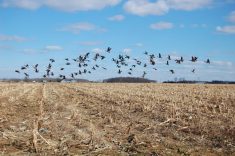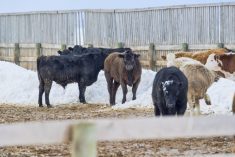Manitoba’s winning streak on bird flu hit a speed bump in the back half of June.
According to the Canadian Food Inspection Agency (CFIA), Manitoba currently sits at three cases of H5N1, a strain of highly pathogenic avian influenza, after two small flocks were confirmed positive in the last three weeks.
The province has reported its first new domestic bird flu cases in months, although impact in Manitoba is paltry compared to the hundreds of thousands of commercial birds claimed in other parts of North America.
Read Also

A place of national honour for former deputy ag minister, Dori Gingera-Beauchemin
Long public service, focus on community and industry leadership launch Dori Gingera-Beauchemin into 2025 Canadian Agricultural Hall of Fame honourees
On June 14, the CFIA reported the virus in a small flock in the RM of Harrison Park, south of Riding Mountain National Park. Days later, the CFIA said another small flock had broken, this time hundreds of kilometres to the southeast, in the RM of Louise.
Both were non-commercial flocks, a spokesperson from the CFIA said. Both premises had less than 300 birds and no poultry products were being sold.
- [READ MORE] Winnipeg city council says no to urban chickens
The confirmations come months after Manitoba’s only case of H5N1 in a commercial flock, found in an eastern Manitoba poultry operation in the RM of Whitemouth April 23. Following that finding, the CFIA established what has, to date, been Manitoba’s only restricted primary control zone (PCZ) around the community of Elma.
As of June 24, that control zone remained in place. The infected zone within the larger control zone (a three-kilometre buffer around individual infected farms) had, however, been removed.
“The infected premises continues to make progress toward being eligible for release from quarantine,” the CFIA said in a statement to the Co-operator.
The agency is “now conducting post-outbreak surveillance in preparation for revocation of the PCZ if no further avian influenza cases are detected,” the statement added.
Infected zones are released after depopulation and disposal is done on individual affected farms, plus a 14-day window in which no new infections can be discovered in the area, according to the CFIA’s website. The PCZ must have gone 28 days without a new infection, and primary decontamination must be done on infected sites, before the CFIA will lift the larger PCZ.
Wild cards
The two new cases come long after the arrival of most migratory birds from the U.S., commonly blamed for Canada’s bird flu issues this year. U.S. poultry sectors have been hard hit from widespread bird flu outbreaks, adding to a generally higher global trend for the disease. As of June 24, the U.S. Department of Agriculture said that more than 40 million birds had been impacted by the virus, with most cases being found in March and April.
The spring, and the northward journey of wild birds from states that had become hot zones for the outbreak, brought a surge of Canadian cases.
- [READ MORE] Bird flu, Ukraine war push up world egg price
Following the first cases of the year, found in the Maritimes, commercial flock infections began popping up in Ontario and Quebec, and then later in Alberta, Saskatchewan and B.C. An estimated two million birds had been claimed by the virus or associated control measures by the end of June, largely in Alberta and Ontario.
As of June 24, 25 infected premises remained in Alberta, while six had been cleared, and 936,800 birds had been impacted, according to the CFIA. Ontario numbers showed 22 infected premises, four cleared, and 560,500 birds impacted.
Manitoba, meanwhile, seemed to dodge the rush in cases this spring as the main window for migratory birds drew to a close, and commercial infections in the province remained at one. About 15,500 commercial birds had been impacted province-wide as of June 16.
With Saskatchewan’s 13 total detected cases and B.C.’s 18, Manitoba’s track record remains by far the lowest of any province in Western Canada.
But while the CFIA acknowledged that, “the seasonal wild bird migration to the north is largely over,” the agency added that “there continue to be wild birds in Manitoba and the avian influenza virus can persist in the environment in locations like dugouts, manure and soil.”
Manitoba’s office of the chief veterinary officer has also noted that the problem is not exclusive to wild birds.
Following two wild H5N1 confirmations this spring (one in snow geese in southwestern Manitoba, the other in a bird of prey in the northwest), the provincial vet authority has found more than 70 cases of the virus in the wild. Samples from 30 species have been submitted for testing.
Most of those are, in fact, from birds, a spokesperson from the provincial government said. At the same time, several cases have also been found in red foxes and a skunk, they added.




















